Scandinavia is a fascinating region full of quirks, history, and cultural surprises. Here are some fun facts to help you understand what makes Denmark, Norway, and Sweden so unique.
Welcome to Northern Europe! Known for its stunning landscapes, progressive societies, and rich Viking history, the region of Scandinavia captivates visitors from all over the world.

But Scandinavia is much more than fjords, forests and furniture from IKEA. Behind the postcard-perfect scenery lies a fascinating culture shaped by centuries of shared history and modern innovation.
From unusual Easter traditions to multilingual monarchs, there’s a lot more going on up here than you might expect.
So, grab a cup of coffee (more on that later!) and get comfy. Whether you’re planning a trip or just love a good trivia challenge, here are 25 fun facts about Scandinavia you probably didn’t know.
Top Scandinavia Facts
Let’s kick things off with some essential facts to help you get your bearings on what exactly Scandinavia is, and who counts as Scandinavian.
1. Scandinavia Consists of Just Three Countries
Scandinavia is often used interchangeably with the term “Nordic,” but there’s a difference. Strictly speaking, only Denmark, Norway and Sweden make up Scandinavia, linked by geography, language, and deep historical ties.
The broader Nordic region also includes Finland, Iceland, the Faroe Islands, Greenland and the autonomous Åland Islands. All these countries collaborate closely in areas like politics, education, and infrastructure through the Nordic Council.
Although not always classified as “Scandinavian”, these other countries share many cultural similarities, making the region feel more like a big family than separate nations.
2. Scandinavians Can Understand Each Other (More or Less!)
Because Danish, Norwegian, and Swedish all evolved from Old Norse, there’s a high level of mutual intelligibility. In theory, a Swede and a Norwegian can chat away without much trouble. But in reality, accents, dialects and slang often get in the way.
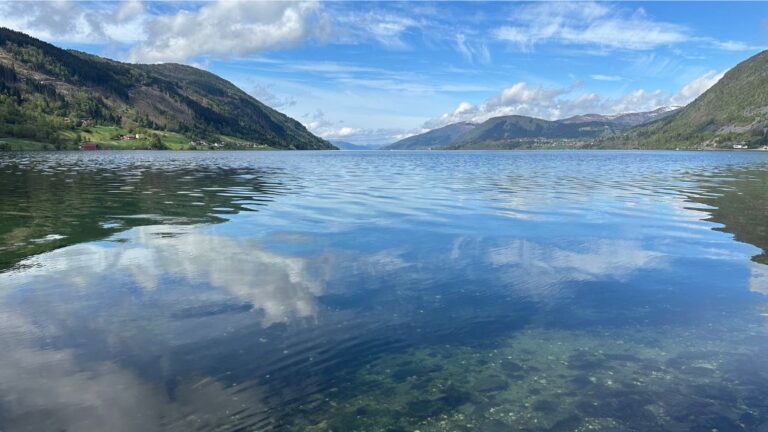
Spoken Danish, in particular, is famously difficult to understand even for fellow Scandinavians, partly due to its soft pronunciation and dropped consonants.
In formal settings such as conferences or cross-border meetings, it’s quite common for everyone to switch to English to avoid confusion.
3. Scandinavians Speak Excellent English
Scandinavia regularly tops international rankings for English proficiency. Children start learning English in primary school, and most media is consumed in English rather than dubbed into local languages.
Because of this, many Scandinavians grow up almost bilingual. In cities especially, you can expect near-fluent English speakers of all ages. This ease with English makes the region incredibly welcoming for international visitors, students and workers alike.
Facts About Scandinavian History
From Viking kings to 19th-century revolutions, the history of Scandinavia is full of intriguing twists and turns that still shape the region today.
4. All Three Countries Used to Be in a Union
The Kalmar Union united the kingdoms of Denmark, Norway and Sweden (including Finland, which was then part of Sweden) under a single monarch from 1397 to 1523. It was created partly to strengthen the region against outside threats like the Hanseatic League.
While the three nations retained control over local matters, foreign policy and defence were coordinated centrally. The union was frequently troubled by power struggles, especially between Sweden and Denmark.
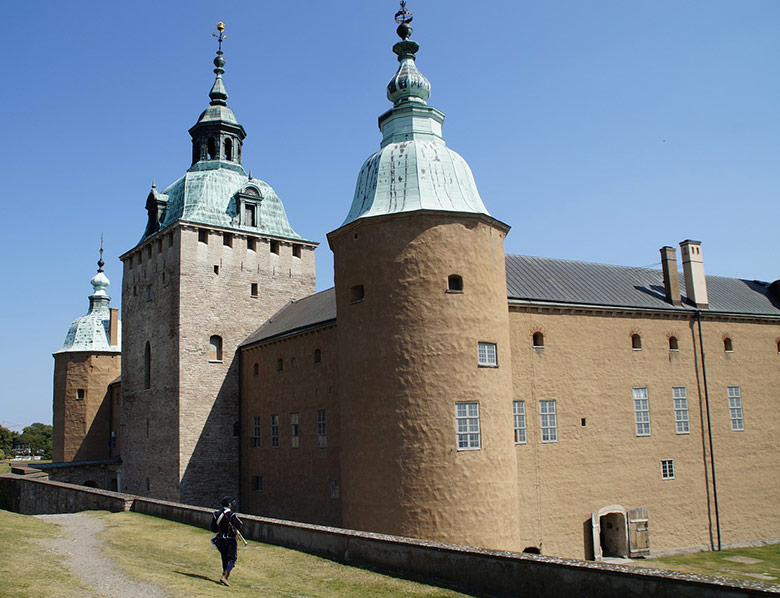
Eventually, Sweden broke away, leading to centuries of rivalry and wars before the countries developed the close cooperation they enjoy today.
5. A French Army officer became a Scandinavian King.
Jean Baptiste Bernadotte began his life as the son of a French lawyer, rising through the ranks of Napoleon’s army to become a general.
In an unexpected twist of fate, he was offered the Swedish throne after the death of a crown prince and a series of dynastic complications.
He accepted, converted to Lutheranism, learned Swedish (sort of), and ruled as King Karl XIV Johan. His descendants still sit on the Swedish throne today. Royal lineage can sometimes come from the unlikeliest of places!
6. The Term ‘Scandinavia’ Originated in the 18th Century
The idea of a shared Scandinavian identity began taking shape during the Enlightenment. Intellectuals, artists and writers started to explore the common history and values between the countries.
By the 19th century, this blossomed into the political and cultural movement of “Scandinavism”, which promoted unity based on language and culture.
One of its most enthusiastic champions was Danish writer Hans Christian Andersen, who popularised the sentiment with his poem “I am a Scandinavian“. The movement laid the groundwork for today’s Nordic cooperation.
7. Scandinavian Airlines Was Founded by the Three Governments.
In the aftermath of World War II, Denmark, Norway and Sweden pooled resources to form a joint airline that could compete internationally.
Initially intended for transatlantic routes, the collaboration expanded, and in 1951, the national airlines officially merged into Scandinavian Airlines System (SAS).
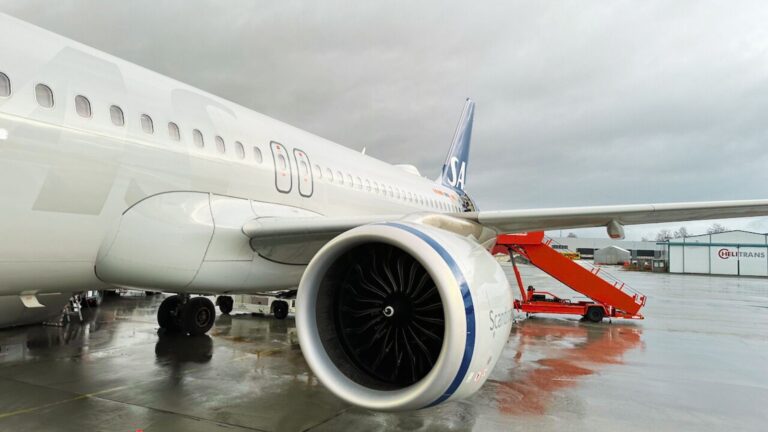
This unique cross-border setup gave the region a global presence in aviation. However, times have changed. Norway has since sold its shares, and SAS has faced financial turbulence in recent years as it adapts to a competitive airline market.
Cultural Facts About Scandinavia
From its unusual sporting seasons to an obsession with coffee and mountain adventures, Scandinavian culture is full of surprises.
8. Football is a Summer Sport
Unlike most of Europe, where football is a winter sport, Norway and Sweden shift their football season to spring and summer.
This avoids matches being played in sub-zero temperatures and heavy snowfall, especially in the north. Leagues typically run from March to November, aligning with the milder weather.
Denmark, with its more temperate climate, sticks to the traditional autumn-to-spring football calendar. This quirk can make transfers between clubs in different countries more complicated due to mismatched season timelines.
9. The Scandinavian Mountains are More Than 1,700km long
Sometimes known as the Scandes, this ancient mountain range stretches from southern Norway through much of Sweden and up into the Arctic Circle. It’s not the tallest in Europe, but it makes up for it with rugged beauty and deep glacial valleys.
Galdhøpiggen, Norway’s highest mountain at 2,469 metres, is a favourite among hikers and climbers. The range also forms a natural barrier between Norway and Sweden, contributing to very different landscapes and climates on either side of the border.
10. The Region is Obsessed with Coffee
If you thought Italians were the kings of coffee, think again. The Nordic countries are among the world’s top consumers of coffee per capita. Norway alone averages nearly 10kg per person annually. But it’s not just about quantity. Coffee culture here is a daily ritual.
Known for their preference for light roasts, Scandinavians often brew coffee at home or enjoy it slowly in cosy cafés. The Swedish concept of fika is practically a national institution.
11. All Three Countries Use the Nordic Cross
Take a look at the flags of Denmark, Norway, and Sweden and you’ll notice a common element: a cross that’s shifted off-centre.
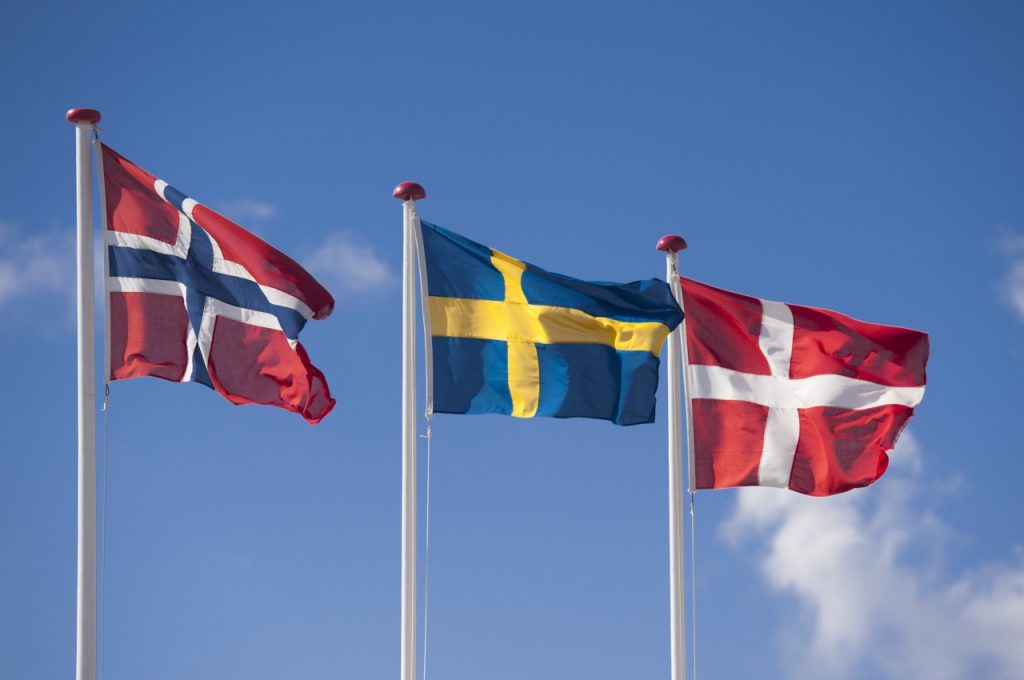
This design, called the Nordic cross, symbolises Christianity and was first used in Denmark’s flag—the Dannebrog—which is the oldest flag still in use today.
The cross design was later adopted by other Nordic countries to reflect shared heritage. Colour choices vary: Denmark uses red and white, Sweden uses blue and yellow, and Norway’s flag combines red, white and blue.
12. A 1,630km-Long EU Border Splits Norway and Sweden
The Norway-Sweden border is one of the longest in Europe, yet it's also one of the most relaxed. Norway is not a member of the EU but is part of the European Economic Area (EEA), giving it access to the single market.
Thanks to the Schengen Agreement, there are no passport checks for travellers crossing the border. However, customs checks still exist, particularly for goods like alcohol and meat, where Norwegian regulations differ from those in the EU.
Lifestyle Facts from Scandinavia
Scandinavian life comes with its own set of traditions, priorities and perks. Some of them might just surprise you.
13. Copenhagen is the Region’s Busiest Airport
Copenhagen Airport (CPH) has long held the crown as Scandinavia’s biggest and busiest airport. As a major hub for both Scandinavian Airlines and Norwegian, it connects the region to cities across Europe, Asia, and North America.
Its efficient layout and frequent connections make it a popular transit point for travellers. In 2018, it handled more than 30 million passengers. Oslo and Stockholm airports also serve millions, but Copenhagen remains the busiest.
14. Scandinavia is the World’s Happiest Region
Denmark, Norway and Sweden frequently appear near the top of the annual World Happiness Report, which ranks countries based on factors like income, social support, freedom, trust, and life expectancy.
High-quality healthcare, accessible education and a strong social safety net help support this happiness.
However, some experts argue that what Scandinavians enjoy most is lagom—a Swedish word meaning “just the right amount”—representing balance, stability and contentment rather than bubbly joy.
15. Scandinavians Value Work-Life Balance
Scandinavians place great importance on personal wellbeing, reflected in their working culture. A standard full-time job involves around 37 hours per week, and employees typically enjoy four to five weeks of paid holiday annually.
On top of that, family life is prioritised through generous parental leave policies. In Sweden, parents can share 480 days of leave, and in Norway, fathers are strongly encouraged to take extended paternity leave.
16. The Øresund Bridge is a regional icon
Linking the Danish capital of Copenhagen with the Swedish city of Malmö, the Øresund Bridge is one of Scandinavia’s most impressive feats of engineering.
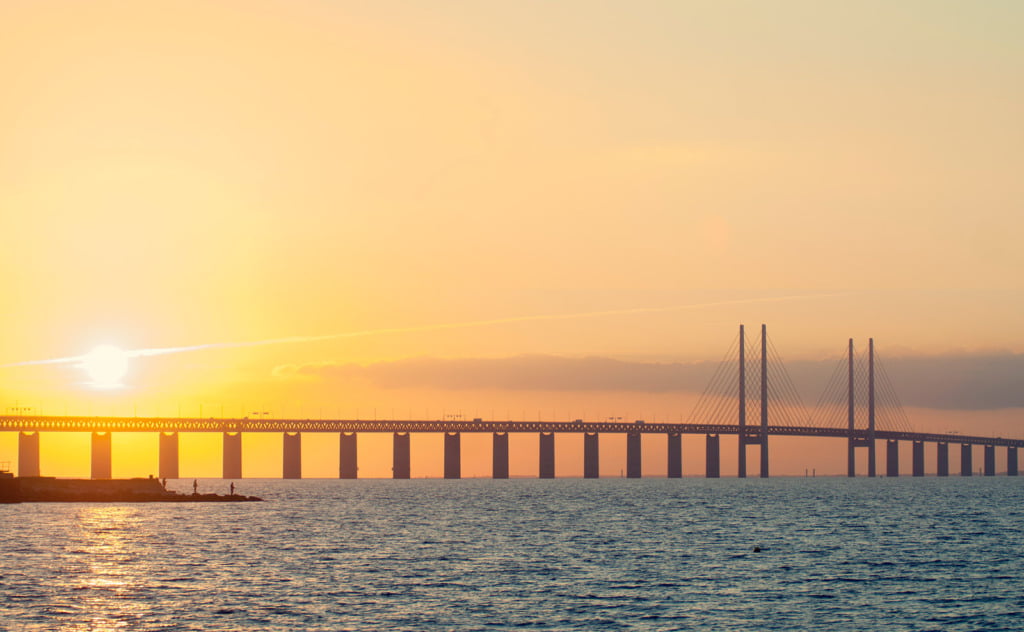
Opened in 2000, the bridge stretches nearly 8km across the Øresund strait before transitioning into a 4km tunnel on the Danish side.
It’s a vital transport link, carrying both road and rail traffic, and it has transformed the region by enabling daily commuting across national borders. It also became a pop culture icon thanks to the hit Nordic Noir TV series The Bridge.
Fun Facts From Sweden
From Easter witches to world-changing inventions, Sweden blends quirky traditions with global innovation.
17. Swedish Kids Do Halloween at Easter
In Sweden, children celebrate påskkärringar, dressing up not in spooky costumes, but as cheerful witches. With scarves on their heads and red cheeks painted on, they go from door to door offering drawings or cards in exchange for sweets.
The custom likely blends old pagan spring rituals with Christian Easter traditions. It’s a charming twist on Halloween that reflects Sweden’s blend of folklore and modern celebration.
18. Swedes Love Recycling
Sweden is a pioneer in recycling and waste management. Less than 1% of household waste ends up in landfills. Instead, a significant amount is turned into energy through incineration, powering district heating systems that warm homes and buildings.
This system is so effective that Sweden began importing waste from countries like Norway and the UK to keep its power plants running. It’s a model of circular economy thinking that’s drawn global attention.
19. Sweden Gave the World Spotify and Flatpack Furniture
Sweden has had a massive global cultural impact despite its relatively small population. The music streaming giant Spotify was founded in Stockholm in 2006 and has since changed how the world listens to music.
Meanwhile, Swedish furniture retailer IKEA has become a global symbol of practical design and minimalist living. These exports reflect Sweden’s commitment to innovation, design, and user-friendly technology.
Fun Facts From Denmark
Denmark charms with its royal legacy, cosy lifestyle, and a serious love for cycling.
20. Denmark is Home to the World’s Oldest Monarchy
The Danish royal family is the oldest continuous monarchy in the world, tracing its roots back over 1,000 years. The current monarch, King Frederik X, succeeded Queen Margrethe II in 2024 after her remarkable 52-year reign.
The monarchy is widely respected in Denmark and plays a ceremonial role in national life, with royal events and traditions still attracting widespread attention.
21. ‘Hygge' is a Danish Word
You may have heard of hygge, but it’s much more than candles and blankets. Hygge is a cultural philosophy centred around comfort, togetherness, and enjoying life’s simple pleasures.
Whether it’s gathering with friends over coffee, reading under a blanket, or enjoying a slow evening meal, hygge is seen as a way to nurture mental wellbeing and create everyday joy.
22. Denmark is a Bike-Friendly Country
In cities like Copenhagen, cycling is the dominant mode of transport. The capital has more bikes than people, and over 390km of dedicated cycle lanes make it safe and efficient to get around on two wheels.
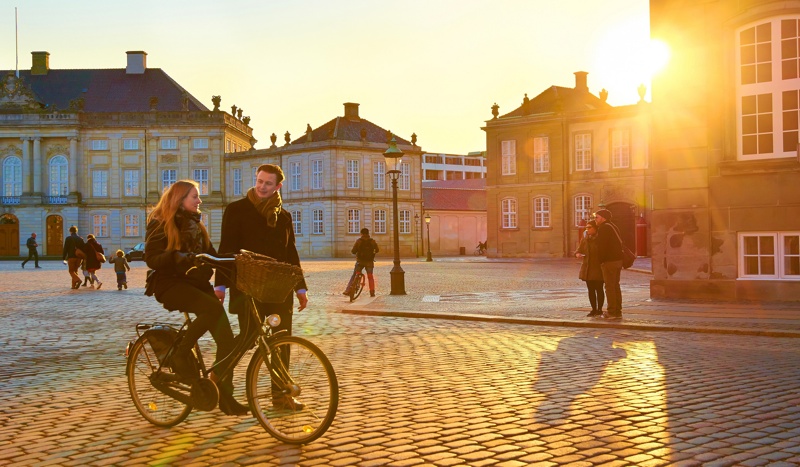
Biking is part of everyday life, thanks to flat terrain, progressive infrastructure, and a green mindset. Even when the temperature drops in winter, Danes keep cycling.
Fun Facts From Norway
Norway’s breathtaking nature, national pride, and green credentials make it a true standout in Scandinavia.
23. Norway Has More Fjords Than Anywhere Else
Norway’s coastline is famously jagged, and with good reason. It’s home to thousands of fjords, carved by glaciers during the Ice Age. Famous fjords include Geirangerfjord and Nærøyfjord, forming the ‘West Norwegian Fjords' UNESCO World Heritage Site.
These majestic waterways are not just scenic; they’re central to Norway’s history and economy, used for transport, fishing, and increasingly tourism.
24. Norwegians Celebrate Constitution Day With Style
17th May is Norway’s national day, or Constitution Day, and it’s a big deal. Instead of military parades, Norwegians celebrate with children’s parades, marching bands, traditional costumes (bunad), and lots of ice cream.
It’s a joyful, community-focused celebration that reflects the country’s democratic values and pride in its peaceful independence. Here's what to expect on 17 May.
25. Norway Runs Almost Entirely on Renewable Energy
Thanks to its abundance of waterfalls, Norway generates over 90% of its electricity from hydropower, making it one of the greenest energy producers in the world.
The country is also a leader in electric vehicle adoption, with EVs now making up the majority of new car sales. Norway’s approach to sustainability sets a powerful example globally.
Scandinavia may be small in size, but its rich history, unique traditions, and modern innovations make it one of the most fascinating and inspiring regions in the world. Do you agree? Let us know down in the comments.

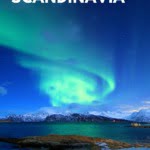

Sorry, David, I must take exception with your first point. While Finland is most certainly not a Scandinavian country, Iceland is. The modern Icelandic language has, like Norsk, Svensk and Dansk, its origins in Old Norse. In fact, the language Icelanders speak today is much closer to Old Norse than those of the other three countries. Furthermore, most Icelanders’ ancestors came from Norway. Many people mistakenly call Finland a Scandinavian country because of its proximity to Norway and Sweden. I think, perhaps, the reverse mistake is being made here because of Iceland’s distance from the other three.
that is a true fact he just wrote but it is a good Scandinavian facts 🙂
Many years ago, while a music student in Stuttgart. I hitch-hiked all over Europe. I remember well the exceptional kindness shown me by the people of Norway. From Oslo I was taken to Bergen and Trondheim. At the beautiful pine-wood youth hostel in Lillehammer there were people from all over the world. A Swedish girl remarked to me, “Your hair is not black. In the sun, it is navy blue.”
When asked if I am Scandinavian I reply I am Norwegian. I wonder if that is common or a product of age.?